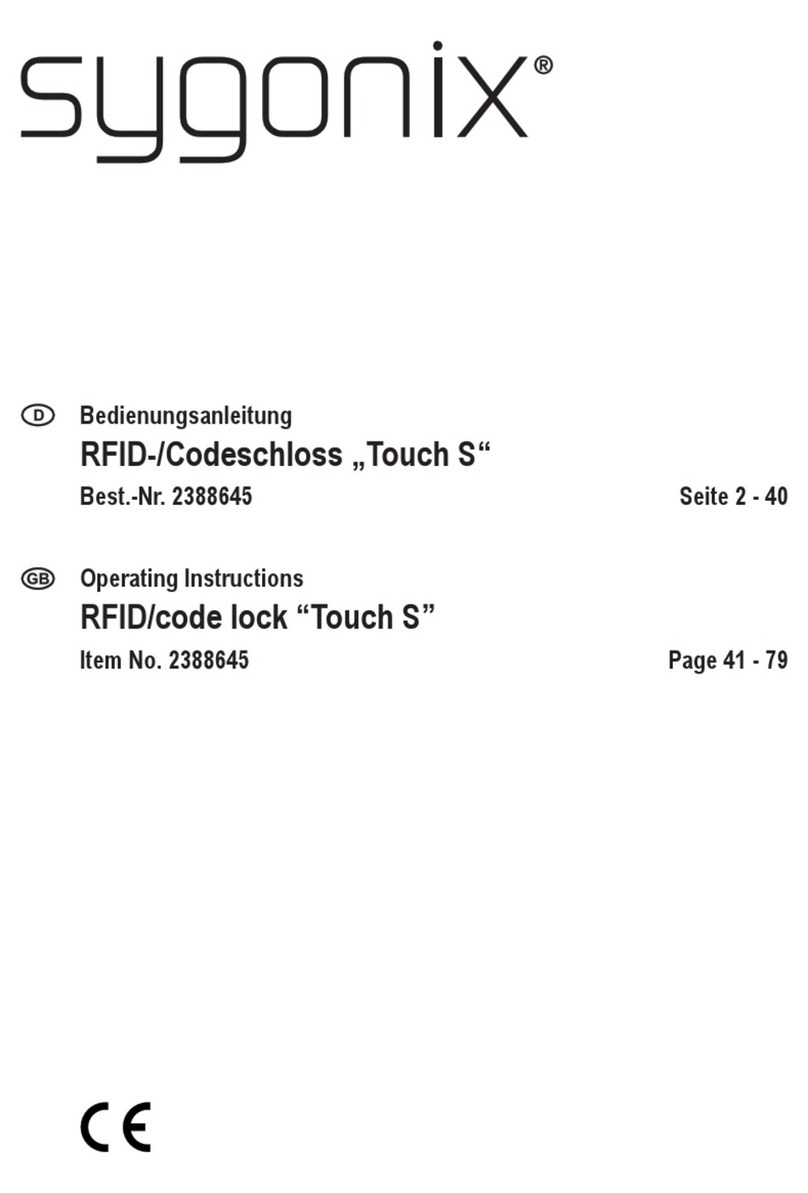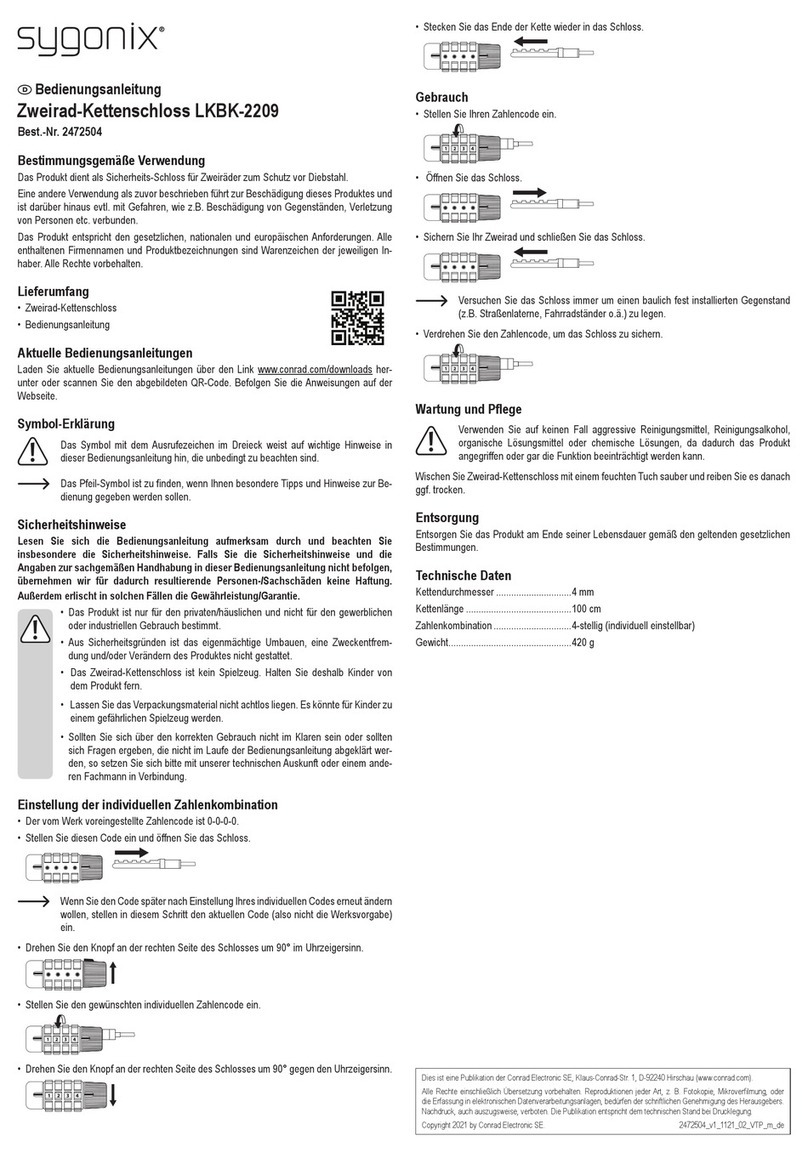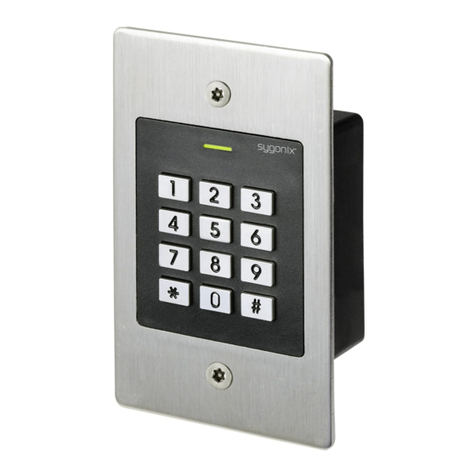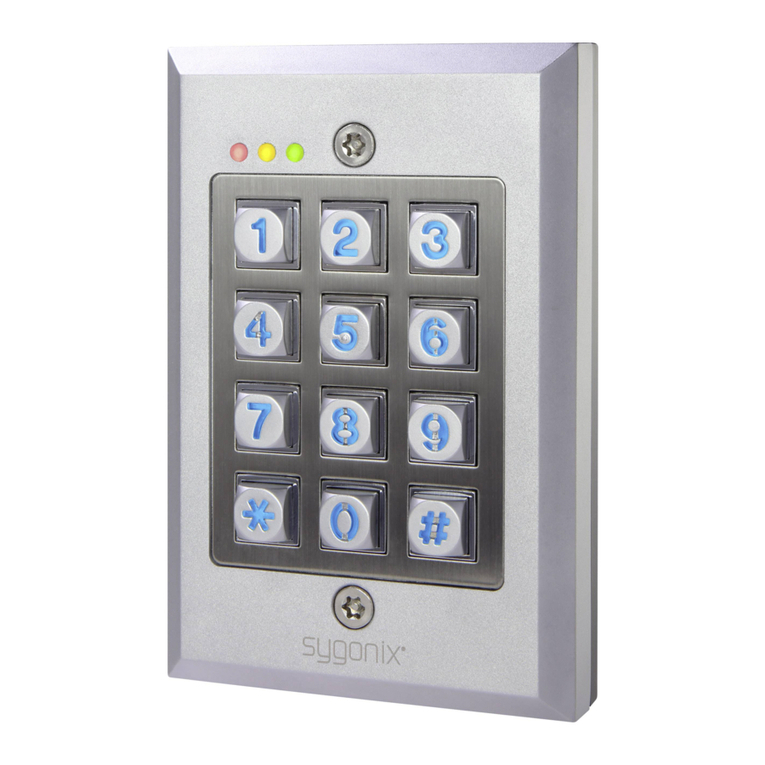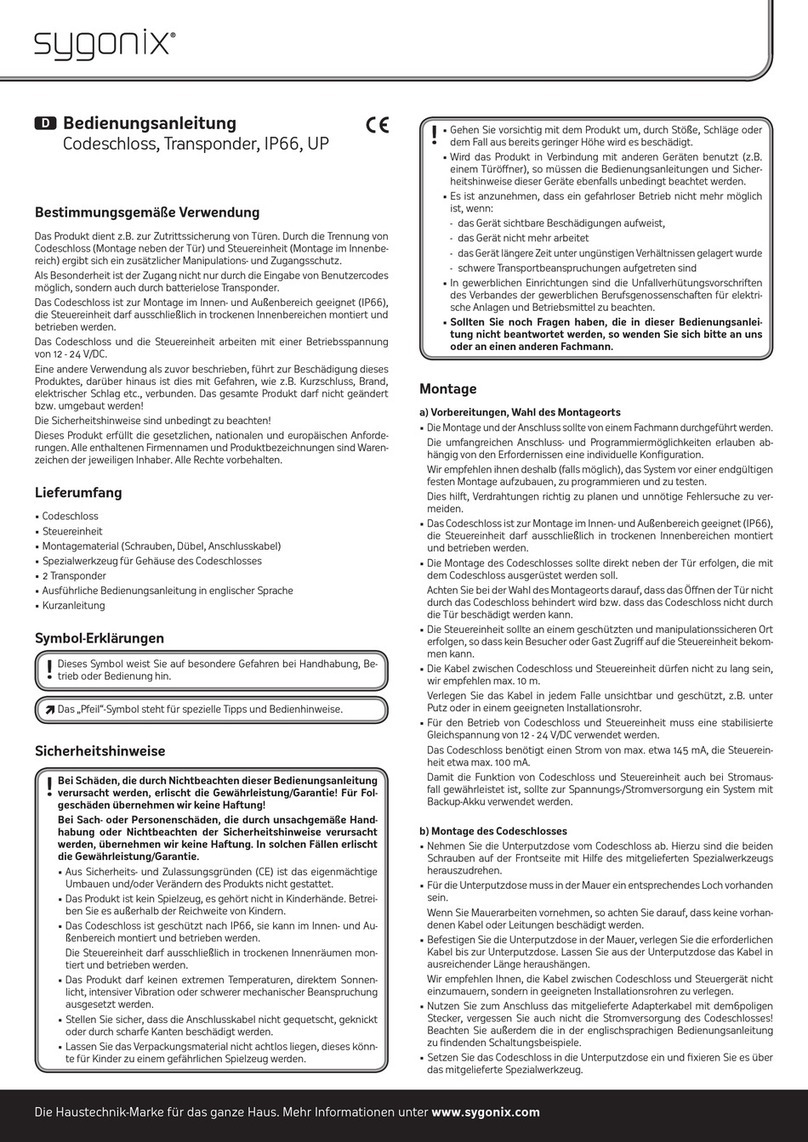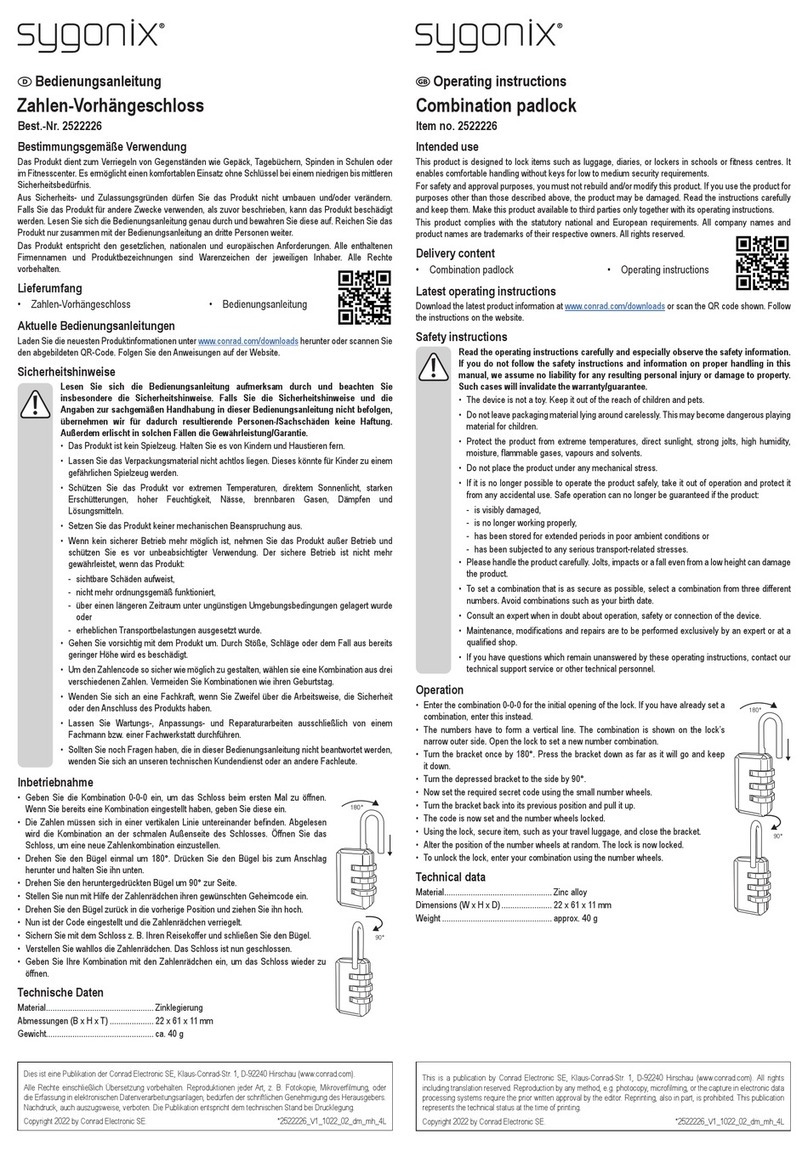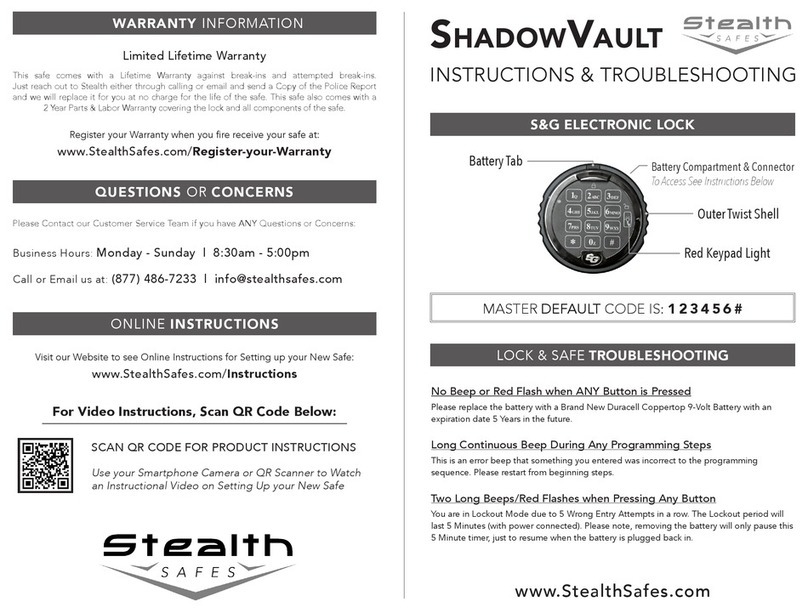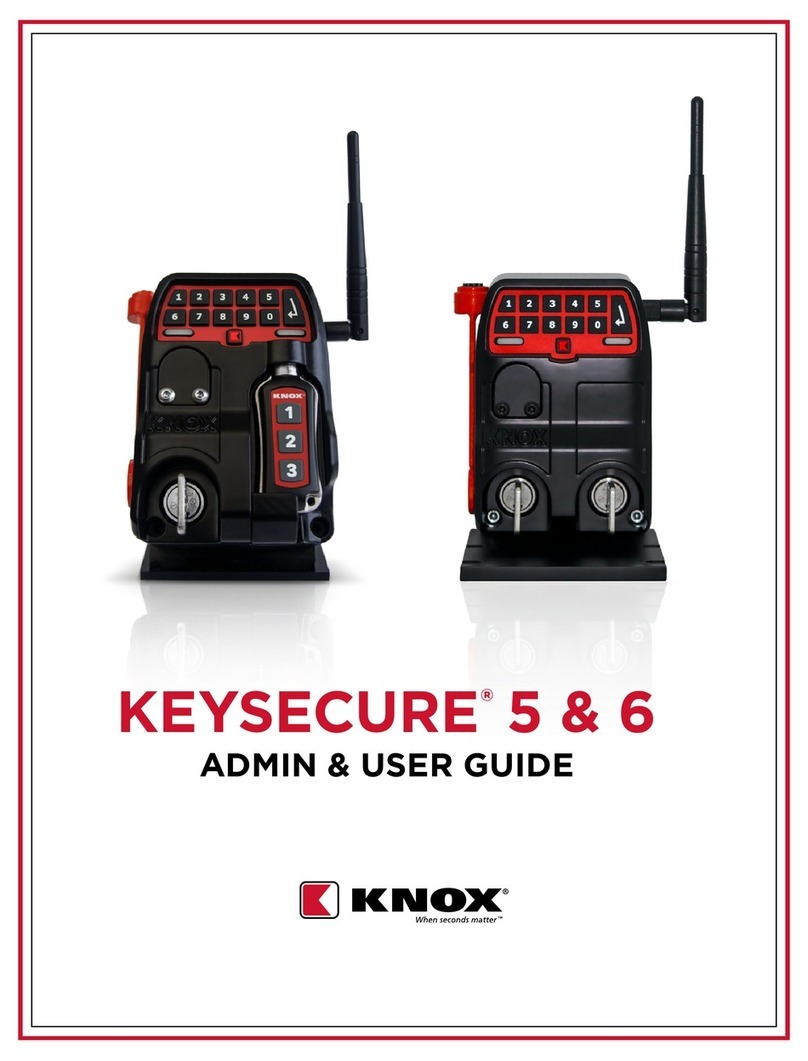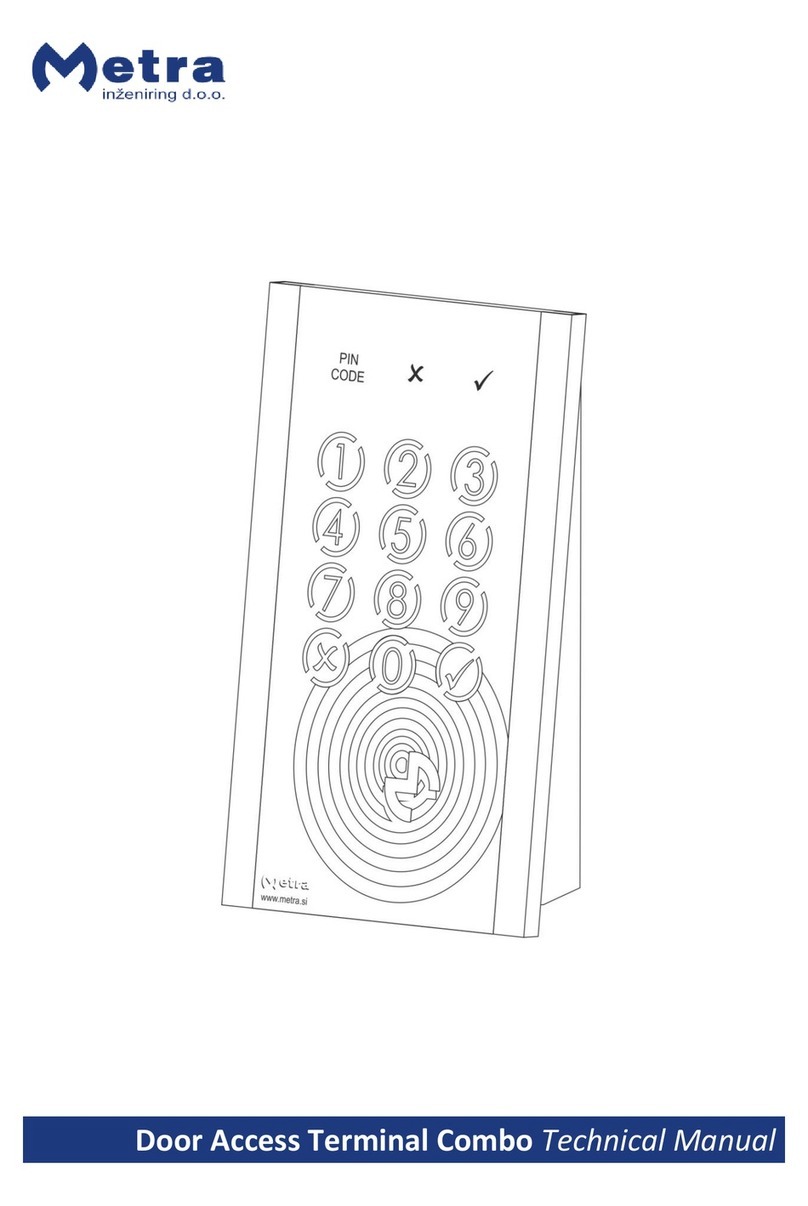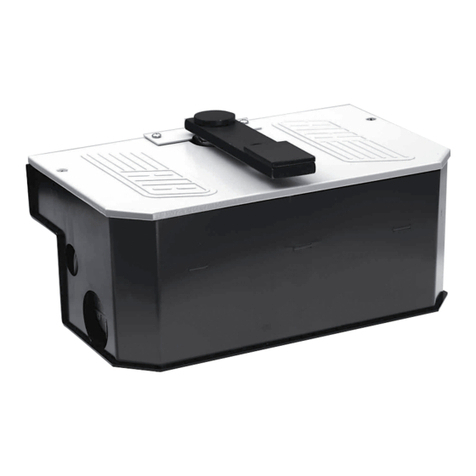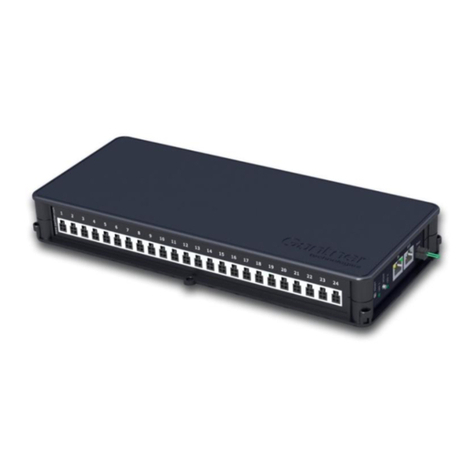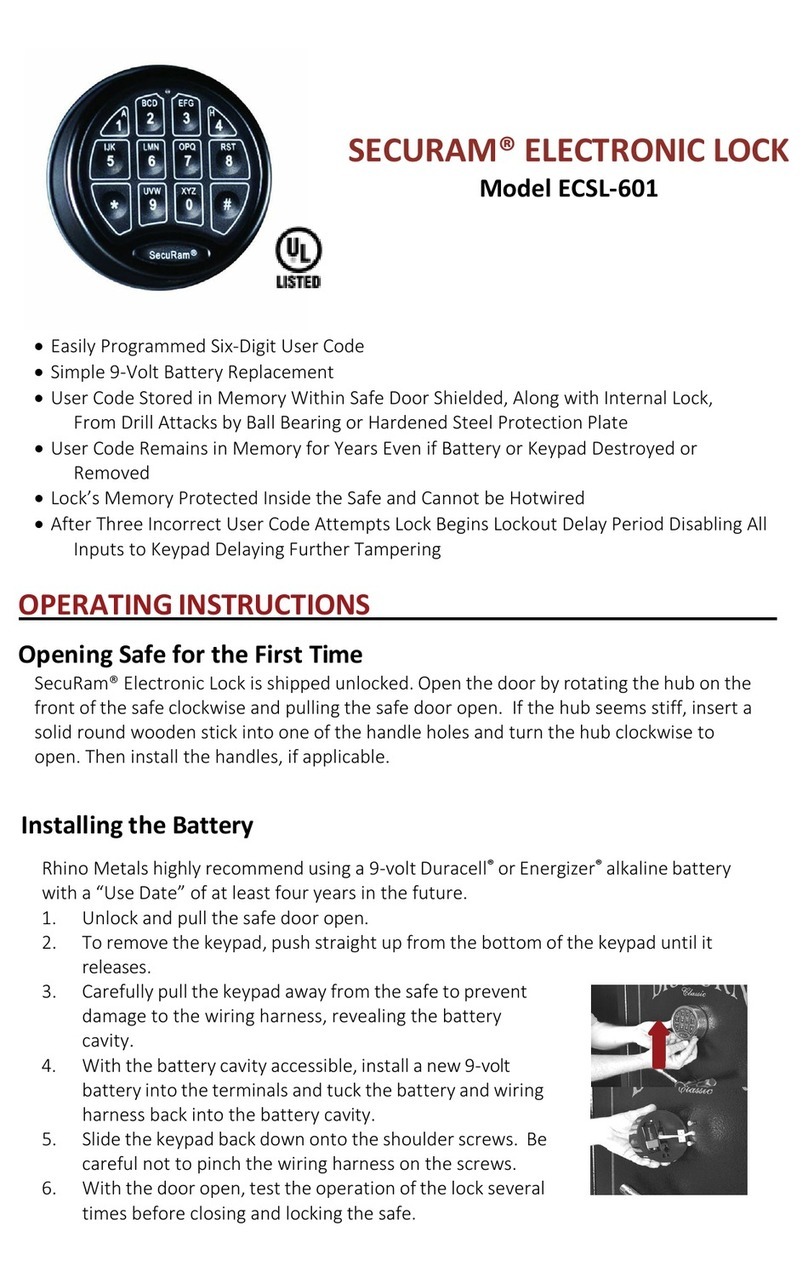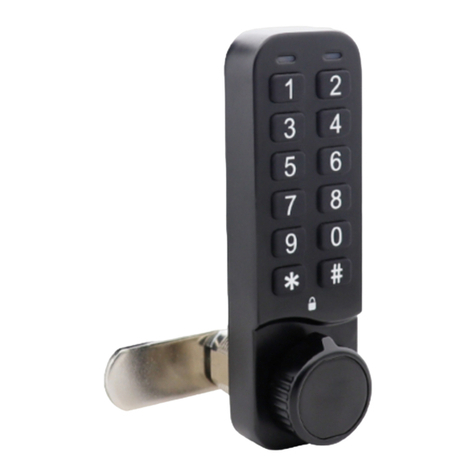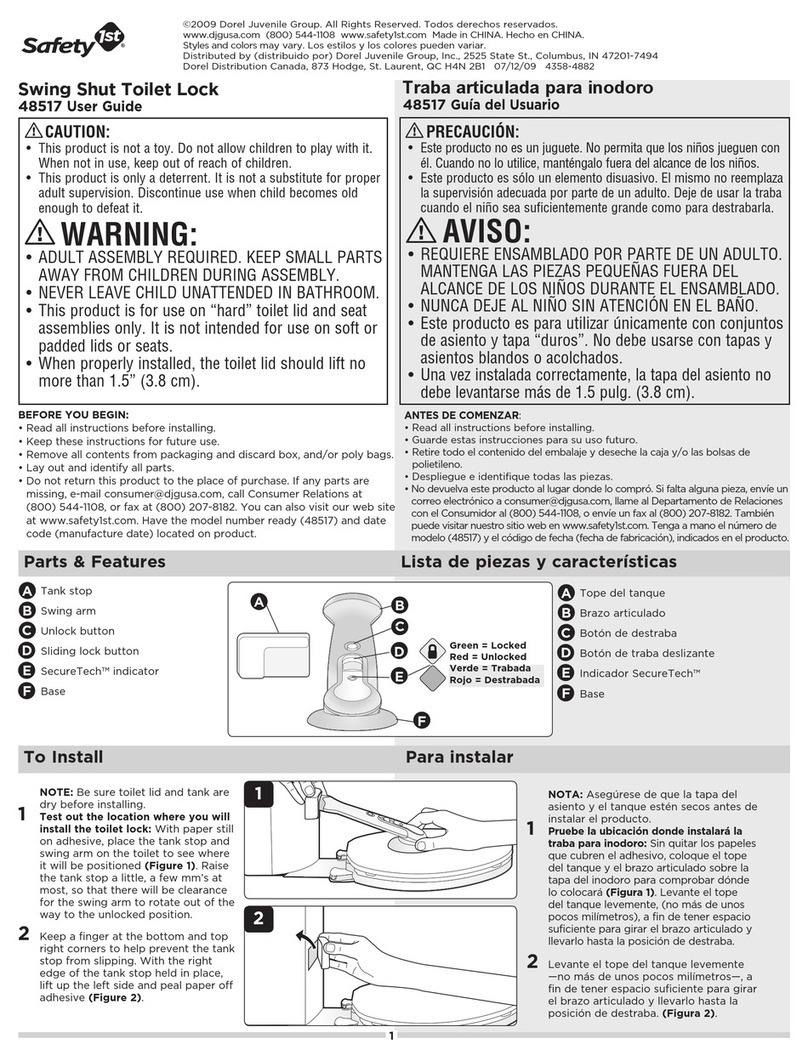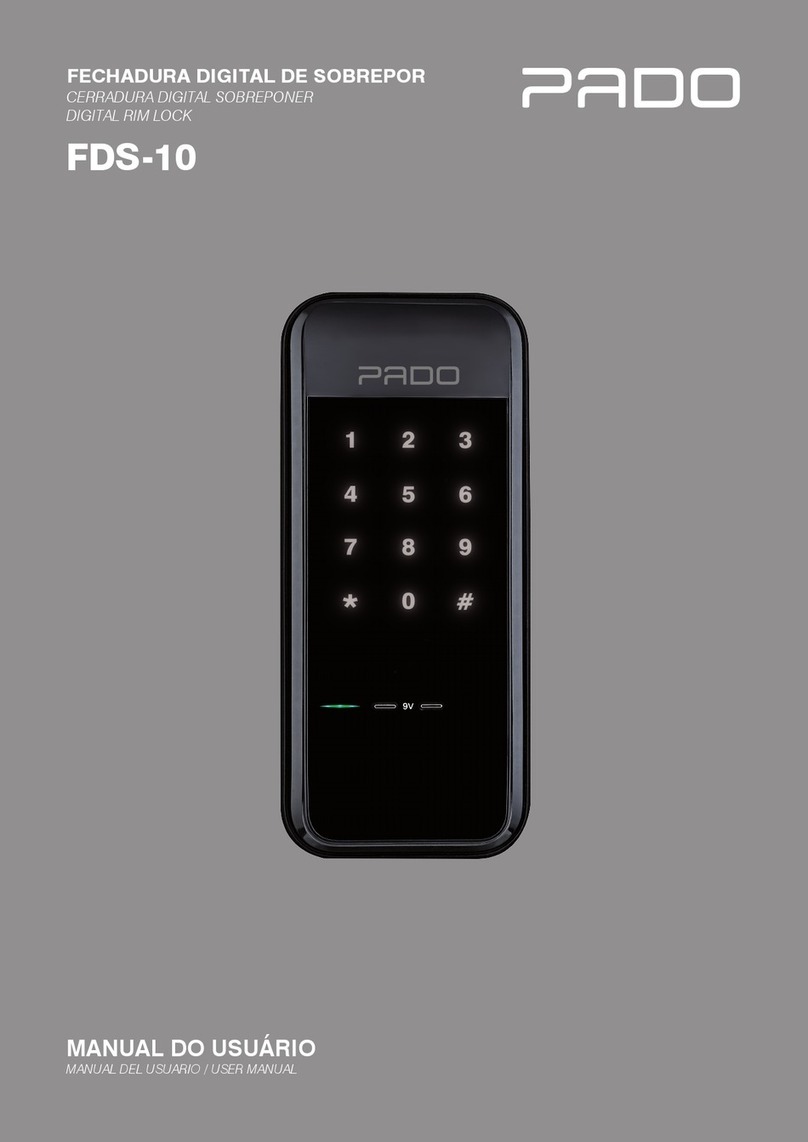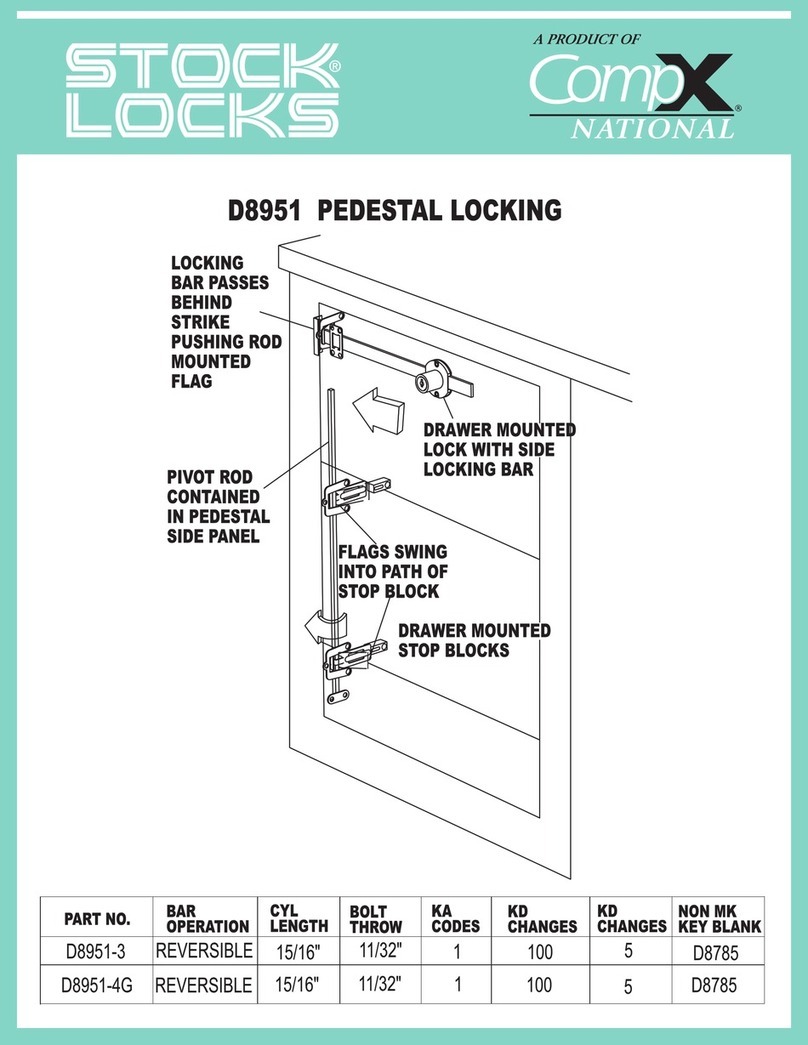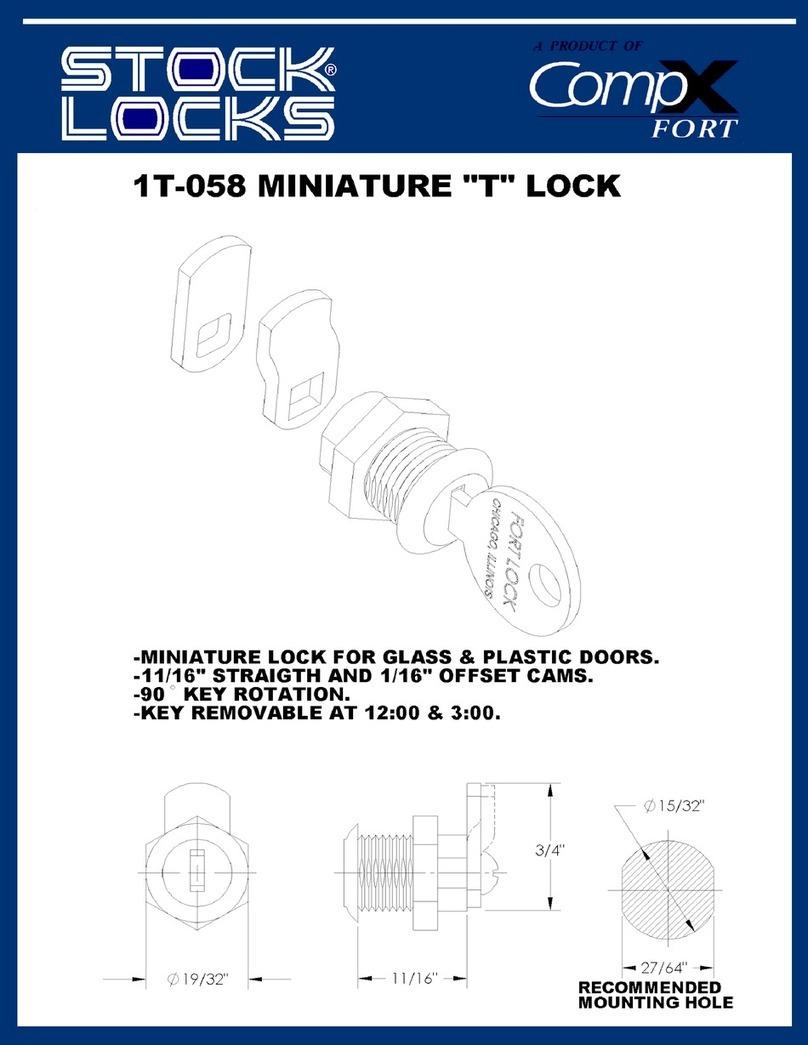
10. Operation............................................................................20
a) Open and lock door.......................................................20
11. Operation............................................................................22
a) Inserting the batteries (keypad).....................................22
b) Low battery indicator.....................................................22
c) Replacing the batteries (keypad) ..................................22
d) Replacing the battery (opening button).........................23
e) Pairing the components ................................................24
12. Beeps and LED indicators..................................................26
13. Programming......................................................................27
a) Quick overview for programming ..................................27
b) Enable programming mode...........................................28
c) Conguringanewmastercode ....................................29
d) Programming regular users...........................................30
e) Programming 125 kHz EM cards for regular users.......31
f) Programming visitor PIN codes.....................................32
g) Changing user PIN codes.............................................34
h) Deleting user PIN codes ...............................................35
i) Setting the access mode...............................................36
j) Programming the relay behaviour.................................37
k) Conguringthebell.......................................................39
l) Reaction of the code lock to incorrect entries...............40
m) Tamper alarm ................................................................41
3
